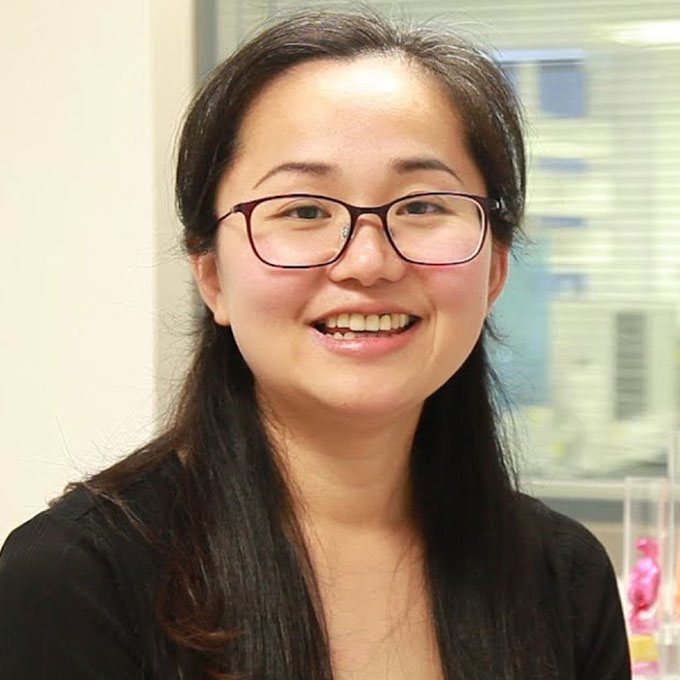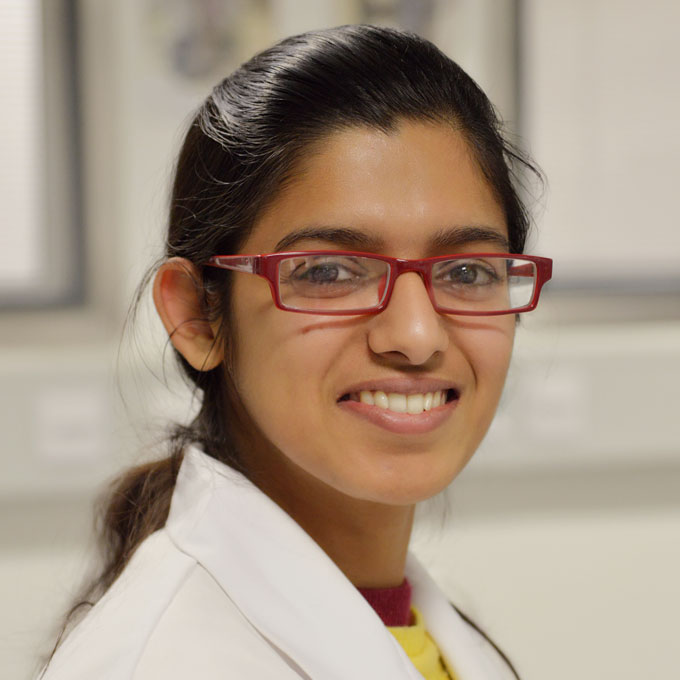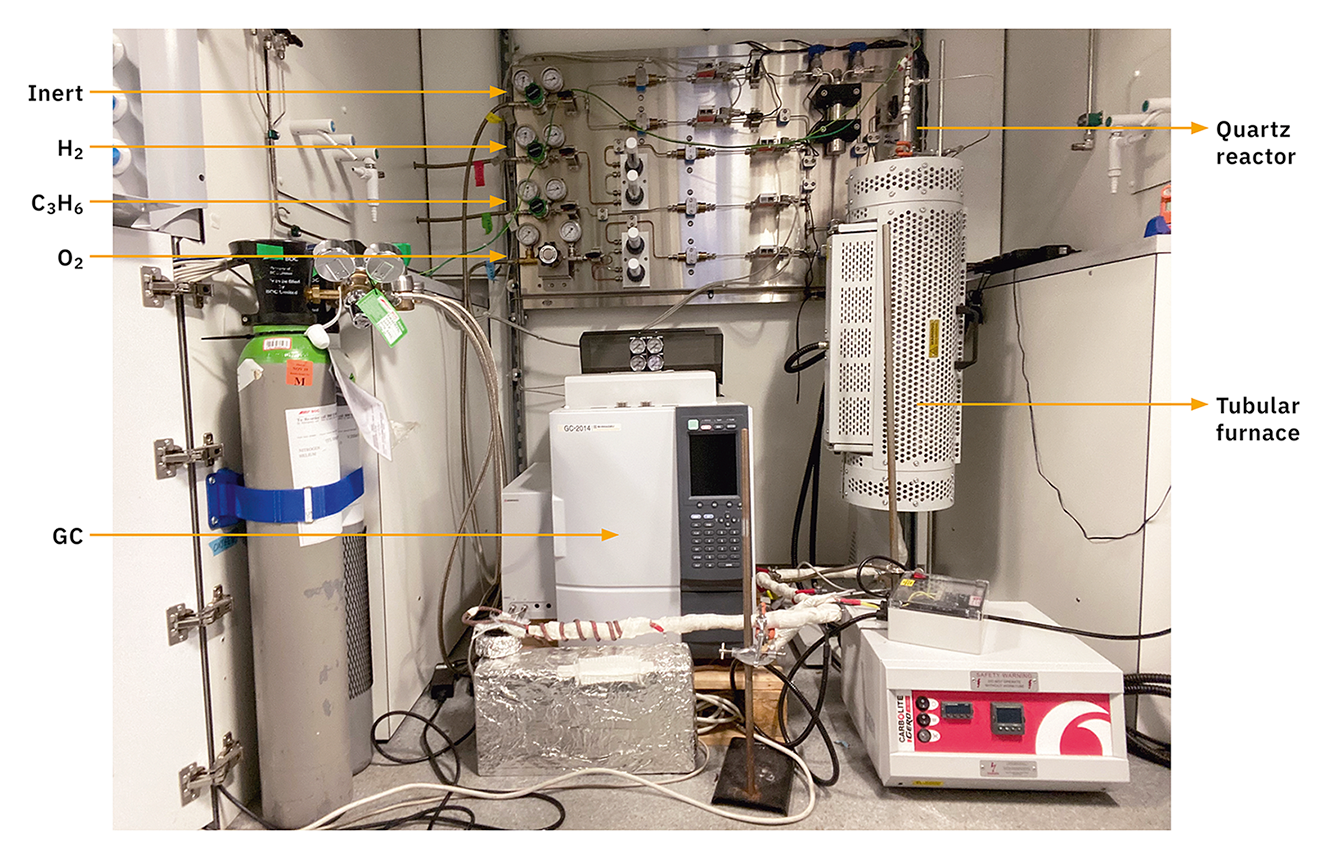

Custom instruments drive major breakthroughs
Custom GC helps UCL researchers explore new frontiers in chemical engineering
Dr. Han Wu, Dr. Nidhi Kapil, UCL Centre for Nature Inspired Engineering, London
The need to improve the environmental credentials of the processes used to make commodity chemicals and fuels and the desire to make use of waste industrial gases such as CO2 is driving a whole new field of research into novel chemical processes. Foremost amongst the institutions following this path is the Centre for Nature Inspired Engineering (CNIE) at University College London (UCL). We talk to two scientists at CNIE with a unique perspective on the role of analytical instrumentation in this research and on Shimadzu’s custom GC systems in particular.
A passion for instrumentation
It’s often said that the progress of science hinges on the performance of the analytical instruments used to acquire measurements – and few people are more keenly aware of this than Dr. Han Wu, based at the Centre for Nature Inspired Engineering (CNIE) within the Department of Chemical Engineering at University College London (UCL).
Since 2018, Dr. Wu has been Research Lab Manager for CNIE as well as for the entire chemical engineering department, overseeing the acquisition and maintenance of a wide range of analytical instrumentation, including more than ten gas chromatography (GC) and high-performance liquid chromatography (HPLC) instruments that are crucial to many research projects. This gives her a unique perspective on how the capabilities of the instrumentation are linked to the success of the research.
Dr. Wu’s interest in analytical instrumentation started early. During her Ph.D. studies at Sheffield University into polymorphism in pharmaceutical materials, she used a wide variety of analytical equipment, including synchrotron XRD, HPLC, TGA, DSC, Raman and more. She says: “This helped me realize just how powerful analytical techniques are and especially how acquiring good data from the instruments in practice is so different from the idealistic scenarios presented in undergraduate textbooks!” During her research, she received a lot of help from the technicians at Sheffield and the synchrotron facility: “I often discussed my work with them and sought advice about how to get the best out of the instrumentation – and as a result, I came to regard their expertise very highly.”
This experience turned out to be a turning point in her career. “Although I had a great passion for research and indeed continued along that path as Professor Alan Jones’ last postdoctoral research assistant at UCL, it made me realize that I also loved helping scientists get the best out of their research. So when a job as research technician at CNIE turned up, I didn’t need to think twice!”
The role of chromatographic systems at CNIE
Dr. Wu’s first purchase in her new job was UCL’s first small-angle X-ray scattering instrument and since then her remit and expertise have expanded greatly. Today, she’s helped by a team of three technicians, who, amongst other responsibilities, look after seven Shimadzu chromatographic systems. Although these are housed in the research labs where they’re used most frequently, Dr. Wu is keen to point out that most of them are shared resources – “making equipment available to whoever needs it is really useful to get the greatest value from it and of course LC and GC are essential for analyzing all types of chemical reactions.”
These Shimadzu systems include two GC-MS/FID, one liquid-only GC system with a 150-vial autosampler, a recently installed custom GC system with a BID detector and two custom on-line GC-FID/TCD systems. At CNIE, these GC systems and other instruments are used in projects that aim to solve grand challenges in chemical engineering by taking inspiration from nature – such as lung-inspired fuel cells, hierarchically-structured catalysts, self-healing materials and nanoporous catalysts that mimic the confinement effects observed in biological systems.
A more sustainable route to propylene oxide
This latter project is one that’s recently produced a flurry of publications – and it’s all thanks to the work of Dr. Nidhi Kapil, who recently completed her Ph.D. on this topic, under the supervision of Professor Marc-Olivier Coppens, founding director of CNIE. With funding from chemicals manufacturer SABIC, she’s been using the custom on-line GC-FID/TCD to study the catalyst-mediated oxidation of propylene to the commodity chemical propylene oxide. The aim is to develop more sustainable routes than the current chlorohydrin and hydroperoxide processes, which generate a lot of waste chemicals.
Dr. Kapil explains her research: “Our reaction involves just propylene, hydrogen and oxygen along with an inert gas and uses a gold catalyst on a fixed bed at 200 °C to generate propylene oxide and water. So it has great potential to be environmentally benign, but the catalyst stability and product yield needed improving, and this has been the focus of my studies.” “I’ve worked on the project since it started – not only refining the reaction and optimizing the catalyst but designing the reactor too. I started out using nanoparticle catalysts and then proceeded to the meso and macro scales by taking advantage of zeolite supports.”
Fine-tuning the on-line custom GC setup
Naturally, as an on-line system, setting up the analytical equipment needed to go hand-in-hand with the reactor design and Dr. Kapil explains what the system looks like: “Basically, we have hydrogen, oxygen and propylene oxide gases, mixed in about equal proportions in nitrogen, which as an inert gas is important for safety issues. These pass through the quartz reaction tube in the reactor and the system runs continuously, with the effluent gases being monitored by a custom-built on-line GC.”
Dr. Kapil explains that, following discussions with Dr. Wu, it was clear that Shimadzu was an obvious choice for the custom GC setup. “We needed to be able to separate not just the reactants and products but several byproducts too – and because it was an on-line system, the columns needed to work efficiently to keep the run time as short as possible. Dr. Wu already had an excellent relationship with Shimadzu, so we got talking straight away.”
Although the challenge seemed formidable, Dr. Wu says that this didn’t faze the Shimadzu team: “Following discussions to fine-tune the requirements and work out the hardware options, we decided on the optimal setup and they handled it from there. In the end, it took just 6 months from start to finish – they made it all seem so easy!”

The custom GC and reactor setup used by Dr Kapil for her propylene oxidation work. The system, which is housed in a walk-in fume hood, is based on a GC-2014 and uses a two-column setup, with a run time of 42 min. A Porapak T column and an FID are used to separate and detect propylene oxide, carbon dioxide, water, propylene and the oxygenated byproducts ethanal, propanal, acetone and acrolein, while the permanent gases hydrogen, oxygen and carbon monoxide used a Molsieve 5A column and a TCD. The photo shows the controls for the reactor gases (and nitrogen) at top left, the reactor itself on the right and the GC in the center.
Efficient analysis, impressive results
Dr. Kapil says that throughout her Ph.D. studies, the analytical setup did exactly what it needed to – “everything worked perfectly!”, she says. This enabled her to focus on the core part of her Ph.D., that of finding an efficient route to an optimized catalyst. The results of the reaction itself, published in Angewandte Chemie, are impressive, with catalyst lifetime having increased 10-fold to over 20 days and with the selectivity for propylene oxide having raised to nearly 90 %. Her thesis has also been selected for reprinting by Springer in a volume titled “Stable supported gold nanoparticle catalyst for environmentally responsible propylene epoxidation”.
One aspect of the system that she was particularly impressed with was its robustness. “To start with, we ran the system for about 4 hours, but ultimately we were able to leave it going for up to 30 days, taking measurements every 40 minutes or so. Its reproducibility meant that we could monitor the performance of the catalyst over longer periods and the networked GC meant that I could monitor the system – even when I was away for four days at a conference in the USA!”

Reducing detection limits and improving productivity
In addition to the custom GC-FID/TCD used by Dr. Kapil, Dr. Wu helped select and purchase a GC system fitted with Shimadzu’s barrier ionization detector (BID) for Dr. Yang Lan’s research group within CNIE. This offers detection of virtually any analyte and at much lower detection limits than conventional detectors. Dr. Wu says this will enable them to use just one detector for their very complex reaction systems, rather than a multi-detector system of one TCD and two FIDs. There are plans to use it for two projects, both led by Dr. Lan: one focused on photocatalytic reduction of CO2 and the other on the conversion of methane and ethane to their corresponding alcohols.
In initial tests, the sensitivity of the system has impressed them, she says: “As part of setting up the system, the researchers have been injecting the gas manually, rather than running it as an on-line system. This occasionally resulted in the introduction of a tiny amount of air – and with the BID, we were able to see peaks from the CO2 present in that air, at levels consistent with its atmospheric concentration. That showed us the power of a BID detector!”
One other aspect of the instrumentation that Dr. Wu highlights is the AOC-20 autosampler fitted to one of the liquid-injection GC systems in the CNIE lab. She says: “This system is shared by users from a number of groups and it’s turned out to be really useful. Even though we’re not currently using all 150 of the sample positions, having the flexibility to add samples when we need to and run them overnight, frees up researchers’ time during the day to look after their on-line systems or do manual injections. It also allowed us to help colleagues in other departments when they had problems with their own GC – so overall it means that we can work more efficiently and get more done.”
Personal service … and thriving research
Both Dr. Wu and Dr. Kapil are happy to recommend Shimadzu’s dedicated service. Dr. Wu says: “When I first started as a member of the technical staff at UCL in 2013, there was a common viewpoint in academia that there was no major difference between GC suppliers. But once I started to get into discussions with the vendors, I came to realize that there’s a huge difference in their way of supporting their customers – and for me that is a big highlight of working with Shimadzu.”
She also points out the training provided for students at UCL: “Shimadzu have run special workshops with us, which are super-valuable for those new to GC, because they cover both the theoretical side as well as hands-on practice with different bits of kit. They’re highly regarded by our students, who find the topics very relevant to their work. Quite honestly, I’m struggling to think of any other supplier that’s kept this capability and dedication in-house and offers it for free to their customers.”
It’s that personal connection with the subject experts that’s important for everyone at CNIE, concludes Dr. Wu: “Unlike many manufacturers, I’m never put through to a customer service center and have to explain everything to a different person each time. I have a couple of key contacts at Shimadzu and they’re always happy to pick up the phone and talk about a technical question or discuss how to adapt an existing system to tackle a new challenge.”
“And with the pace of research in UCL being what it is, what’s guaranteed is that new ideas will be coming thick and fast. So our collaboration with Shimadzu will undoubtedly be supporting exciting breakthroughs in chemical engineering for many years to come!”
Further reading
For more information about Dr. Kapil’s work on catalysts for propylene oxidation, please see:
- N. Kapil, F. Cardinale, T. Weissenberger, P. Trogadas, T.A. Nijhuis, M.M. Nigra and M.-O. Coppens, Gold nanoparticles with tailored size through ligand modification for catalytic applications, Chemical Communications, 2021, 57: 10775–10778, http://doi.org/10.1039/d1cc04165g.
- T. Weissenberger, N. Kapil, P. Trogadas and M.-O. Coppens, One-pot synthesis of hierarchical, micro-macroporous zeolites with encapsulated metal particles as sinter-resistant, bifunctional catalysts, ChemCatChem, 2022, e202200268, http://doi.org/10.1002/cctc.202200268.
- N. Kapil, T. Weissenberger, F. Cardinale, P. Trogadas, T.A. Nijhuis, M.M. Nigra and M.-O. Coppens, Precisely engineered supported gold clusters as a stable catalyst for propylene epoxidation, Angewandte Chemie, International Edition, 2021, 60: 18185–18193, http://doi.org/10.1002/anie.202104952.
If you’d like to read more about the work at UCL using Shimadzu’s GC systems, then please see:
- J. Xie, R. Jin, A. Li, Y. Bi, Q. Ruan, Y. Deng, Y. Zhang, S. Yao, G. Sankar, D. Ma and J. Tang, Highly selective oxidation of methane to methanol at ambient conditions by titanium dioxide-supported iron species, Nature Catalysis, 2018, 1: 889–896, http://doi.org/10.1038/s41929-018-0170-x.
- R. Xu, L. Kang, J. Knossalla, J. Mielby, Q. Wang, B. Wang, J. Feng, G. He, Y. Qin, J. Xie, A.-C. Swertz, Q. He, S. Kegnæs, D.J.L. Brett, F. Schüth and F.R. Wang, Nanoporous carbon: Liquid-free synthesis and geometry-dependent catalytic performance, ACS Nano, 2019, 13: 2463–2472, http://10.1021/acsnano.8b09399.
- Q. Wang, X. Guan, L. Kang, B. Wang, L. Sheng and F.R. Wang, Polyphenylene as an active support for Ru-catalyzed hydrogenolysis of 5‑hydroxymethylfurfural, ACS Applied Materials & Interfaces, 2020, 12: 53712−53718, https://doi.org/10.1021/acsami.0c11888.